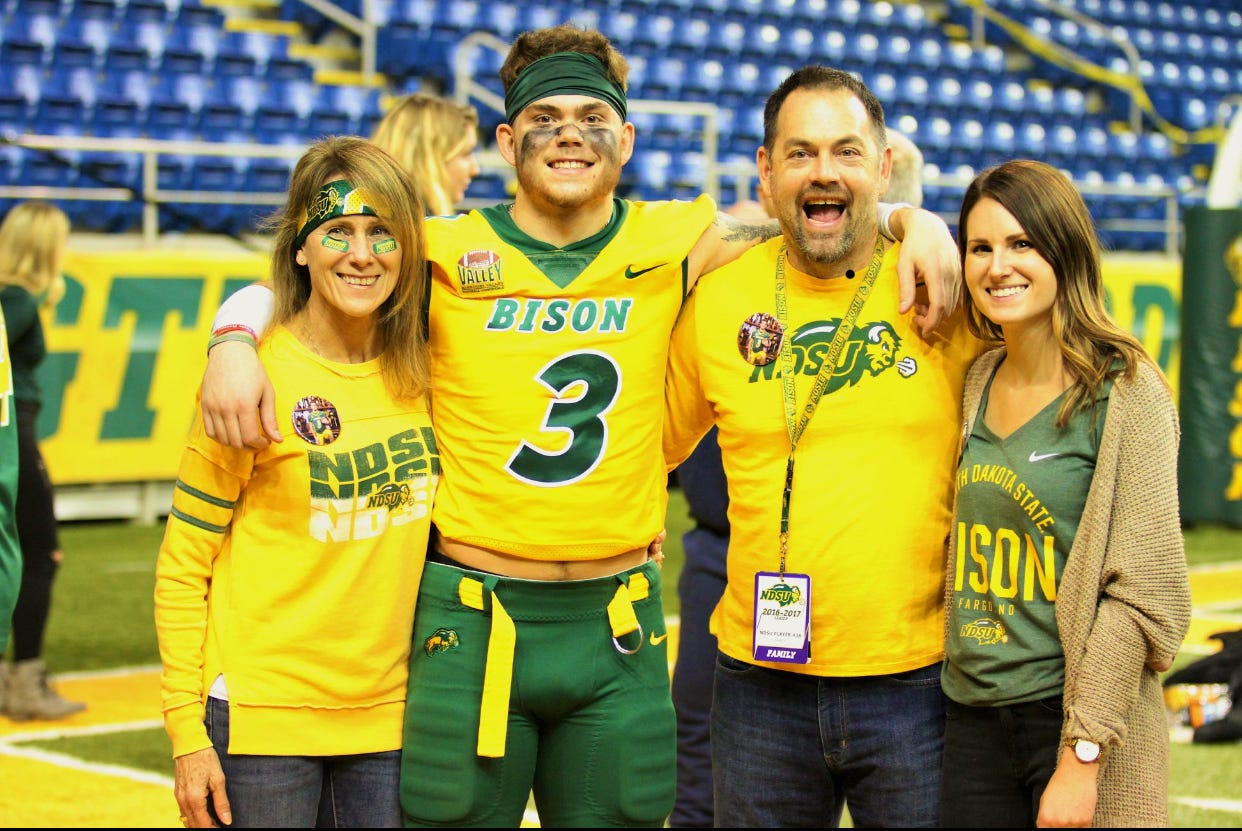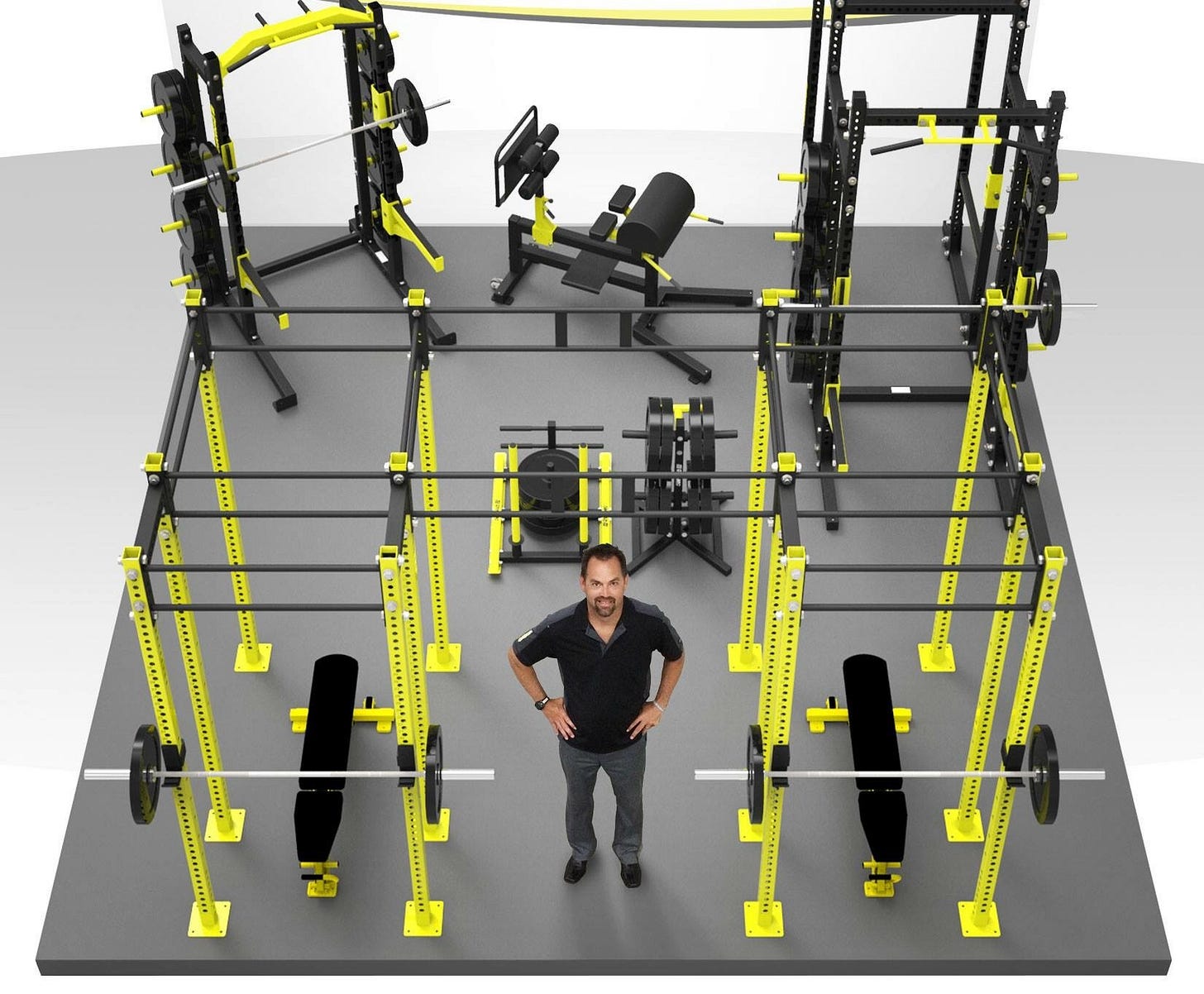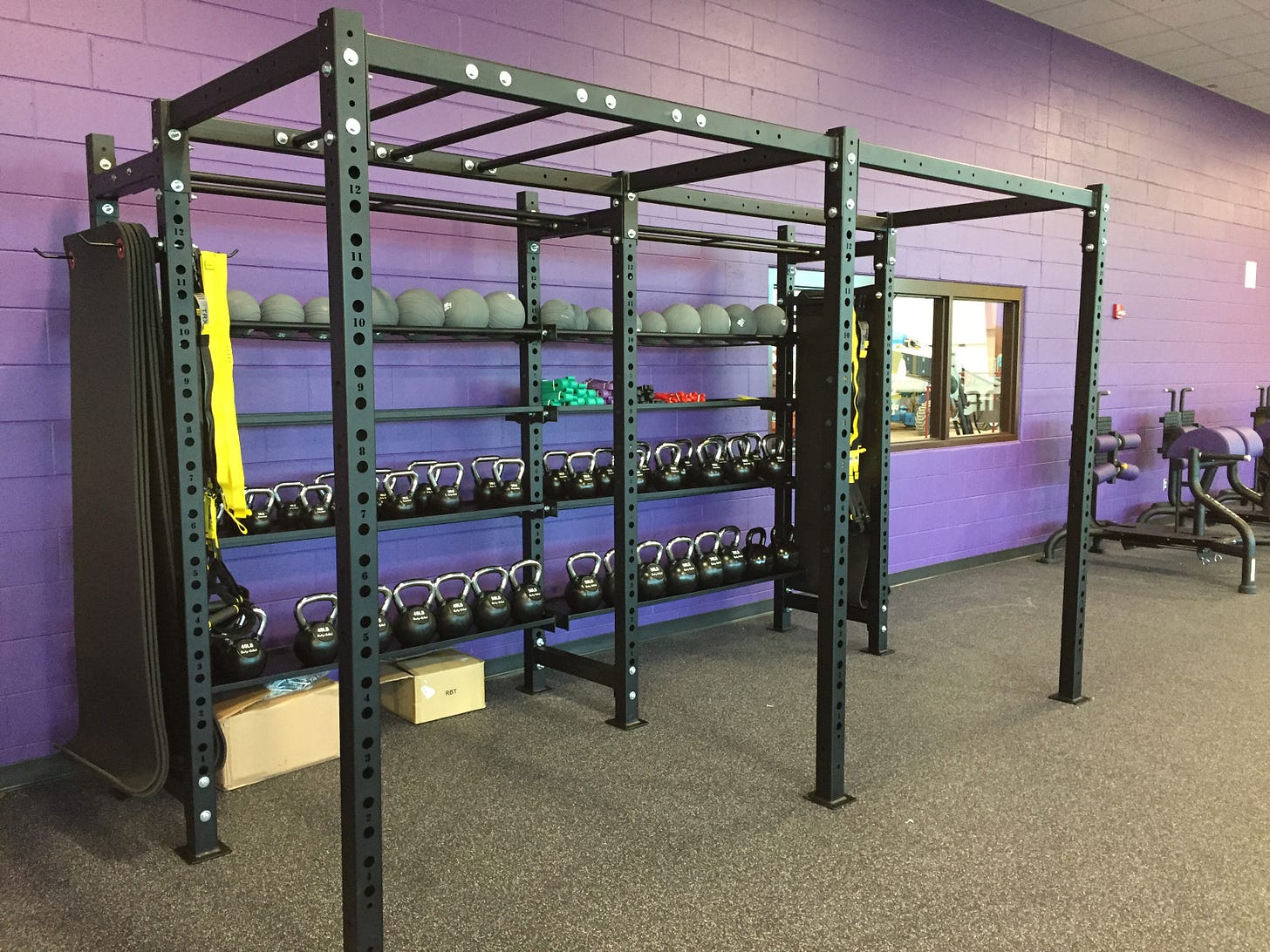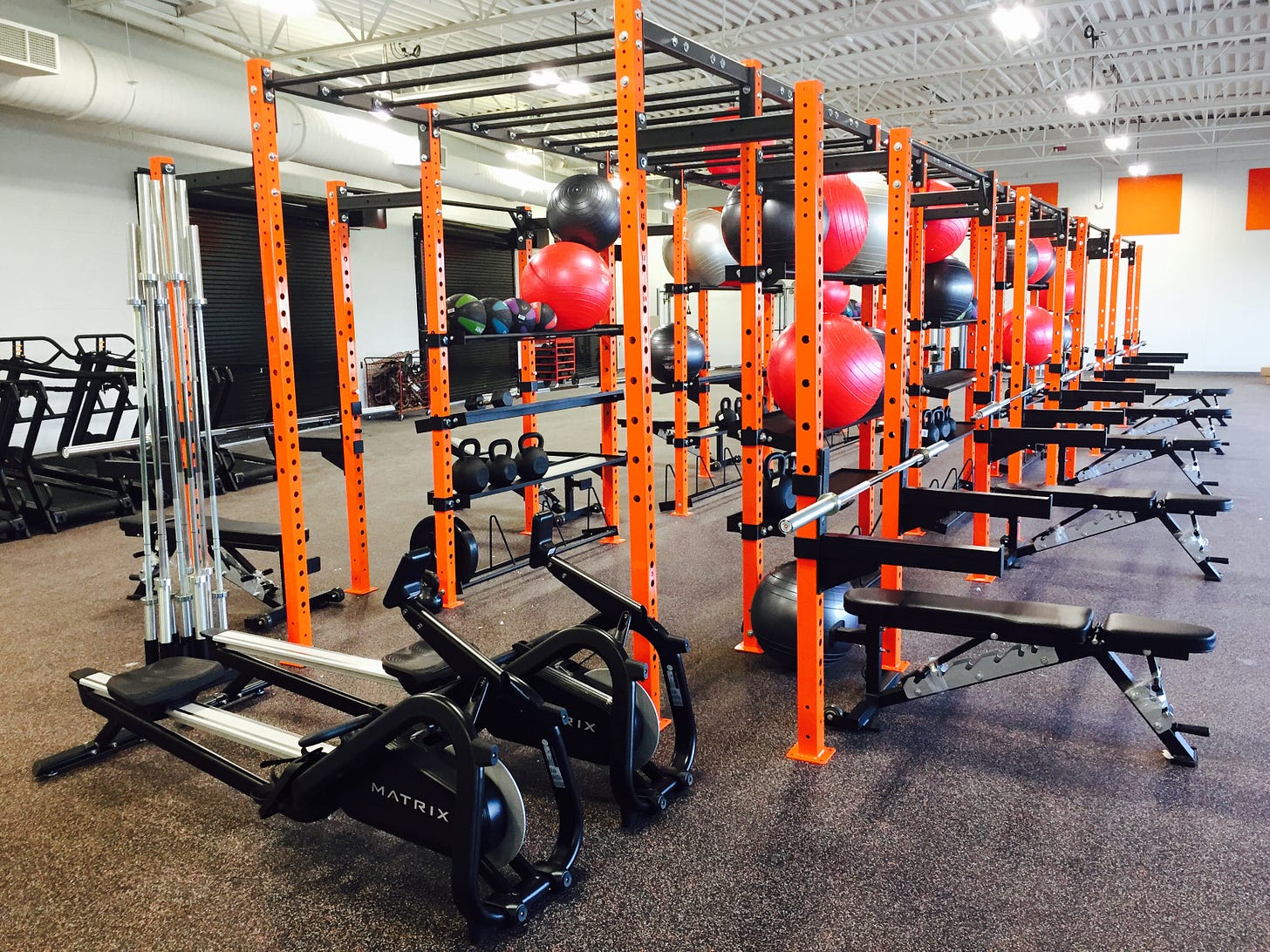A Father’s Day Gift: Meet Guy Brown. Dad, Husband, Former D1 athlete, Advocate for Concussion Awareness, Strength & Conditioning Coach, Fitness Equipment Innovator and Designer.
Meet the strength & conditioning coach who took his knowledge & experience, created the concept that you see in most team training rooms today. Oh, you will love his take on concussion risk in sports.
Happy Father’s Day!
Hope everyone is off to a great Father’s Day.
It is not only a day to celebrate the Father’s in our lives but also the ones who set the table for us from previous generations. Today, I think of my dad, Bill, and all that he gave so I could have a good life. I think of my father in law, Denis, and how much I learned from him. A special day for those special fathers who have contributed to a better world. Enjoy!
The Physical Movement shares stories, best practices and information around leaders from the world of sports and fitness. We have had some fascinating interviews over the last number of weeks and this one will not disappoint either. We hope you enjoy meeting Guy Brown, a special person who has a diverse and unique background around sports and athletics.
Before we dive into meeting Guy, note that we also have articles after the interview on interesting topics in the world of coaching and leadership today.
First is the concept of DO NO HARM, and how that might be a topic worth re-investigating after some disturbing trends are evolving in the coaching world. We also look at the concept of attention to detail. Most coaches, teachers and business leaders will speak about its importance. We have a fun look at a couple of examples from 2 top performers from the world of sports.
Let’s meet Guy Brown!
Guy grew up in Mid-West USA, where he still lives and works today. Guy is a dedicated father and husband. He works currently designing and supplying fitness facilities for organizations of all sizes but has a special passion for the education market. His interest in athletics started as a a multi-sport athlete in high school in football, hockey, and track. Guy's athletic ability led him to play collegiate football for the University of Minnesota and Oklahoma before suffering a knee injury. Afterward, he finished that career playing for the University of Wisconsin - Eau Claire. After a free agent tryout with the Green Bay Packers, Brown became heavily involved with coaching football as well as strength and conditioning at the collegiate and high school levels. He also ran his own business, on of the first of its kind at the time, and for the last 25 years combined all of these into a career of fitness equipment design, supply and education. Currently he is the sales manager for Summit Commercial Fitness based in Wisconsin and acts as a consultant for Matrix Fitness strength product lines.
Guy has 2 children, both now graduated from university. A daughter, Samantha, from University of Minnesota and son, Jaxon, from North Dakota St. Guy’s family also has an interesting perspective as his wife, Jeanne, has a Masters of Athletic Training and opened one of the first concussion clinics in the region years ago. This leads to an interesting conversation around concussions and contact sports among other things.

TPM: Guy , thanks for spending some time! I understand your son has just graduated from ND State, congrats to you, him and the family! You were a D1 athlete, as was Jaxon your son, tell me a little about the differences between the demands on him compared to back in the day when you were the same?
GB: Thanks for having me! Thanks for the congrats. We are headed to a different phase and looking forward to it.
Yes, what a difference. I think the biggest difference is time commitment.
The time required today is much more significant for D1 athletes.
Back then, I did train hard as I was self-motivated but that was optional.
But now it is mandatory. There is no off season for many D1 athletes.
North Dakota St. football has been very successful over the last number of years, so their season starts August 1 and goes to to Mid-January. 16 game season. Get maybe 1-2 weeks off.
So not real off season for D1 football athletes today.
Today it’s such a big time commitment, that it is more like a job. He played football which is one of the more demanding sports in which to be part.
Very demanding, full time job almost, it is really 365 days of the year.
TPM: As a parent, what did you worry about in the challenges and benefits from your son going through these demands and balancing it all?
GB: Great question. He was blessed to have a few opportunities as to where to go to school. Having been through it myself, I knew the demands would be high, so it was important that we were involved as parents to guide the process a bit. As an 18 year old, It is a massive decision and commitment and we wanted to make sure we touched all the points we felt were important. Understanding that bigger is not always better and the role of community, the education, and coaching staff as well as the family orientation of the school, as opposed to going there to just win games. There were all important factors in making the right choice from the beginning.
The experience itself gave him relationships, that is powerful. He will have those for the rest of his life.
It also provided the value of the importance of work ethic. This is so important in today’s world. Maybe the most important thing for a son/daughter to come out of the school experience with. We see this missing more and more every day, as more kids are not playing sports as much as previous years. in today’s world understanding work ethic and its importance means a lot.
In addition, other benefits of the high demands are finding ways to work well with others, manage your time of course and being a good teammate.
TPM: We talk about the benefits of being physically active, and being involved in a collegiate sport or sport at any level certainly helps there vs the drawback of physical inactivity.
Then there are the lifestyle benefits like time management , work ethic and understanding how to contribute towards organizational or team success, these are so important.
GB: Some insight there, my wife, Jeanne, is one of the first people to open a concussion clinic in the region. With her Master’s of Athletic Training, and being in sports medicine arena years. We are a very sport oriented family. We have been very interested and risks of health and concussion awareness. Is my son not going to play soccer and football due to risks around concussions, but what about the health risk of being inactive? The issues of diabetes, high blood pressure, obesity etc. Her background along with mine gave us a unique perspective.
If we broke he percentages down of the incidence of health related risks of being inactive vs the risks for contact sport athletes being in professional care and head injury, we feel that the percentages favor the activity side.
TPM: Fascinating perspective because of all the attention and concern around head injuries and football. Was that a difficult decision for Jaxon playing D1 football.
GB: Our family always being in high impact, high demand sports of football, hockey, motocross. A good understanding on her part and how we can limit the risks, and using education in our perspective has helped us a lot and we have no regrets.
The question we always asked was how do we limit the risks and take the proper precautions and treat injury should it happen. Weighing them out vs health risks of inactivity and add in the leadership benefits, it became a decision we were comfortable with. For us, the benefits of football and athletic participation highly outweighed the potential medical risks.
TPM: The power of being informed, right, education in helping with decisions?
So much comes down to parents taking a consulting active role in supporting the process. Because if you listen to perspectives in media, it is hard because no all the facts are always shared.
GB: That is a great point, because what we see around head injuries and the data just in the last year has totally changed. And i don’t think that is even out to the general public. Even medically, it is something you have to stay on top of and study because things change so quickly.
TPM: This is where football needs to work to share that information because participation rates going down. How athletes are treated , prepared , coached all factor into the equation.
This is a fascinating topic.
What a great perspective to have both levels of guidance form mom and dad.
Let’s switch gears a little bit
Tell me about your journey from college athlete to free agent tryout with the Packers to knee injury to coaching to equipment supply and design, to education. Interesting journey .
GB: I had always a passion for weight training, the exercise physiology side of athletics. It’s what I went to school for, what I was interested in. I was motivated to train as an athlete, it worked for me then. Then kept educating myself. Even when in college, I had more of a strength coach role with other players asking me for advice.
After college, I got into coaching into the plyometric side of things, sprint training and the strength component.
I then opened my own facility training local athletes in about 1992. It was one of the first in the region with a specialized facility. After a few years, with the family starting, I wanted to normalize things a little bit, the hours and the overall commitment etc. so I made the transition to equipment side of the industry.
TPM: I can speak to the transition from education to business a little , but how did that transition evolve for you in starting equipment sales?
The people that were selling me equipment said you should get into this. So I did and it has been terrific for 25 years.

TPM: I think you and I started around the same time into equipment, yes. I mean we started in its infancy. We have seen a tremendous amount of evolution and growth over that time.
What was the biggest challenge to making that adjustment to sales and business from coaching and education?
GB: I think learning how to communicate with peers. When I started in equipment, I was now calling on other coaches. At the beginning it was a challenge, but it became an asset as the coaches and teachers started, I think, to realize that I was the same in terms of background and knowledge. So that became and advantage because we could communicate at the same level.
TPM: When we first met about 10 years ago, you were making the transition from equipment sales to equipment design. In fact, we started representing your line up here in Canada because it was so innovative in providing modular training solutions that really were not mainstream at the time. What was that experience like?
GB: I think that transition was one of my best achievements in my equipment career. It allowed me to learn so much but also have an impact on what was being offered for training facilities.
I had the opportunity on the manufacturing and design side to build equipment that addressed the needs I knew existed by my time in sales, but also as an athlete and coach.
I felt equipment could be done better to benefit the coaches and teachers.
An example is in a high school with a 25000 square foot room, how can we design to provide through put , meaning get people through the room , get groups of different sizes through the room with different abilities and all have something appropriate.
So we developed modular racking. Rig solutions
We started to give coaches and teachers options, for the first time, around their programming. Rather than the other way around.
That allowed us to go in and say to a coach and teacher: “Coach, tell me about your programming and beliefs so I can build equipment around that.”

TPM: I know early on in my sales career I learned to instinctively focus on the customer’s main objective, but over the years realized that you needed to have a group behind you that had the tools to support what the customer needed. That is the secret sauce is it not, the combination of both?
GB: Without a doubt. We need to know what the management of the fitness room have as needs and what do they want to improve upon.
I had experiences early on in my career in developing equipment with companies like Magnum Fitness and Lifefitness Hammer Strength with first ½ racks. That created a lot of possibilities in a fitness room.
In the 1970’s and 80’s and we sometimes still see that today, we would see 3-4 olympic benches, 2-3 incline benches, a couple of declines and 3-4 ladder squat racks and now your room is full. That was it. All the benches had single lift possibilities and took up so much space.
So we looked instead of having 1 unit for 1 lift, to get a unit for multiple lifts with the ½ racks. We started to look at it from a perspective of space efficiency form a ½ rack for multiple lifts.
In the last 8-10 years we have seen a significant shift into modular system which now dominates any athlete weight room, with multiple companies copying what we first started.
A ½ rack with training stations, bodyweight weight and suspension options as well as storage all in one.
TPM : The coaches, teachers and young athletes of today have some cool resources, where you can fit multiple levels, group sizes
GB: Now we see group training aspect in 40% of our sales.
At 630pm we can fit 60 athletes into a room, and 1 hour later work with a small group of deconditioned students. Same room, same equipment but now the room is so much more versatile.
We have that flexibility now.
With that ability to cater to groups, we also have the ability to introduce fun, play, collaboration, peer teaching, teamwork and all that goes with that.
The motivation and interaction, the workouts becomes more fun. When exercisers are counting on each other. As opposed to just individual lifts. A social component has so many benefits.

TPM: This really speaks to the soft skills developed by being part of a team. The work off the field, yes? teamwork, helping others, working towards a goal.
All the skills of working together in the gym now mirrors what is happening on the field. Even for those players not playing as much, the time off the field adds so much to the development.
What would you suggest to those looking to build out a facility or room with now so many options?
GB: To anyone adding to looking to add equipment, I would suggest taking some time. Educate yourself and your buying group.
So many things on the market today are smoke and mirrors. A good marketing strategy can make something look premium when it is not.
Buying something for a facility without due diligence is like purchasing a car without driving it.
A rack is not a rack. They are not built the same, they are not engineered the same, the materials are different and so is the price.
A dumbbell is not a dumbbell. There are differences in how they are made and treated and that affects durability, safety and appearance.
Determine how functional and versatile the equipment is, as well as its durability.
How does the equipment fit into your philosophy and programming?
There are vast differences in manufacturing quality.
For example, foam density on upholstery will determine how long the pads last on your benches and strength equipment, and how well it holds it shape. You can not tell that from marketing.
I do approximately 12 high school level facilities a year and probably nicer than most universities. These HS communities invest a lot to make sure this room serves them well for years.
The best equipment will last for years and years. However, very often cutting corners or not doing proper research, but 2-3 years after purchase will start to look very worn and breakdown.
Manufacturers lower prices often by taking short cuts. That means equipment looks good at the beginning but won’t last.
We are made to move and having clean and safe equipment make that process easier.
TPM: Thanks Guy, appreciate you spending some time. Some really cool stuff. I appreciate you sharing.
GB: Thanks Greg, good luck with all on your plate and connect down the road!
Guy Brown works as a sales manager for Summit Commercial Fitness, in Madison, Wisconsin. They serve mostly the upper mid west, and focus all non residential markets. You can find them here http://summitcf.com/ See some of the installs http://summitcf.com/gallery.html
Guy brown on facebook, twitter and Instagram, you can find him there.
Also from The Physical Movement this week:
A disturbing trend has highlighted some practices that are tolerated under the watch of those trusted in leadership positions. Let's examine some simple guidelines to get us back on track.
DO NO HARM: A Leadership Philosophy or Forgotten Principle?
In sports, the process of player and athlete development is an important priority. Mention to a coach that a young athlete has strong attention to detail, and you have his/her attention.
Attention to Detail: What Most Don’t See is Why There are Only a Few Top Performers.



